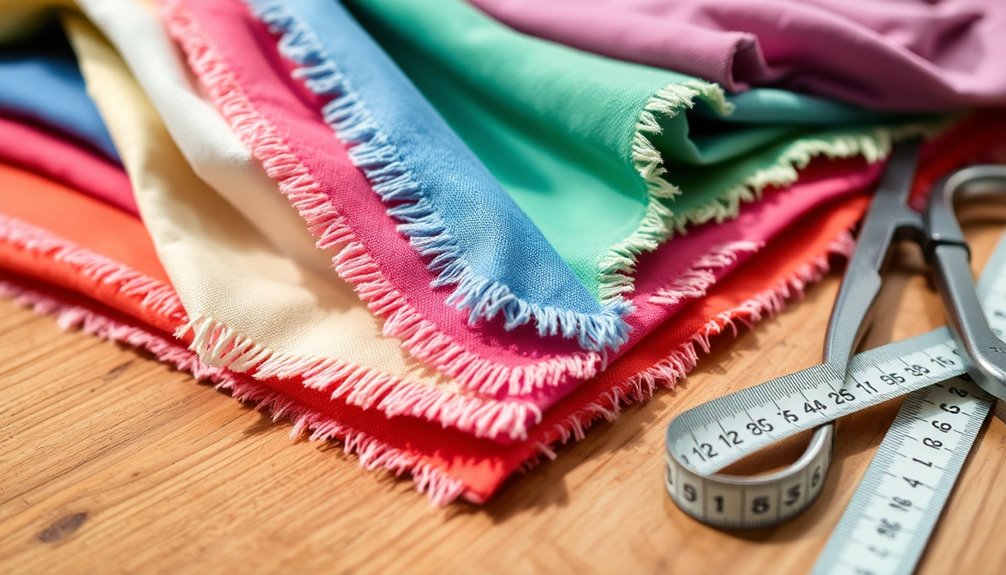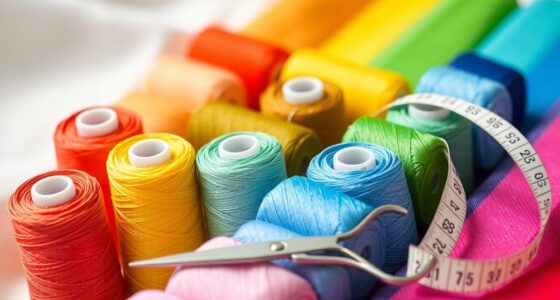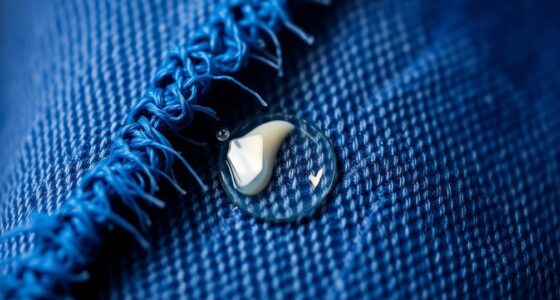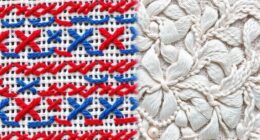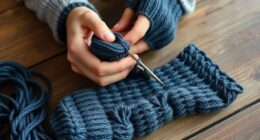Selvage in sewing refers to the self-finished edges of fabric that run along its length. These edges help prevent fraying and unraveling, giving your fabric structural integrity. You'll find that selvage edges can aid in determining the right side of the fabric, and they can also provide useful seam allowances. Plus, they can be creatively repurposed in various projects. If you're curious about how to work with selvage, there's more to discover.
Key Takeaways
- Selvage is the self-finished edge of fabric that prevents fraying and unraveling during sewing projects.
- It typically measures around 1/2 inch and may feature printed information, aiding in fabric identification.
- Different types of selvages, like plain, tape, and fused, offer varying levels of durability and usability in sewing.
- Retaining selvage edges within the seam allowance provides structural integrity and helps maintain the fabric's shape.
- Creative uses for selvage include making tote bags, coasters, and quilts, enhancing your projects with unique designs.
Definition of Selvage
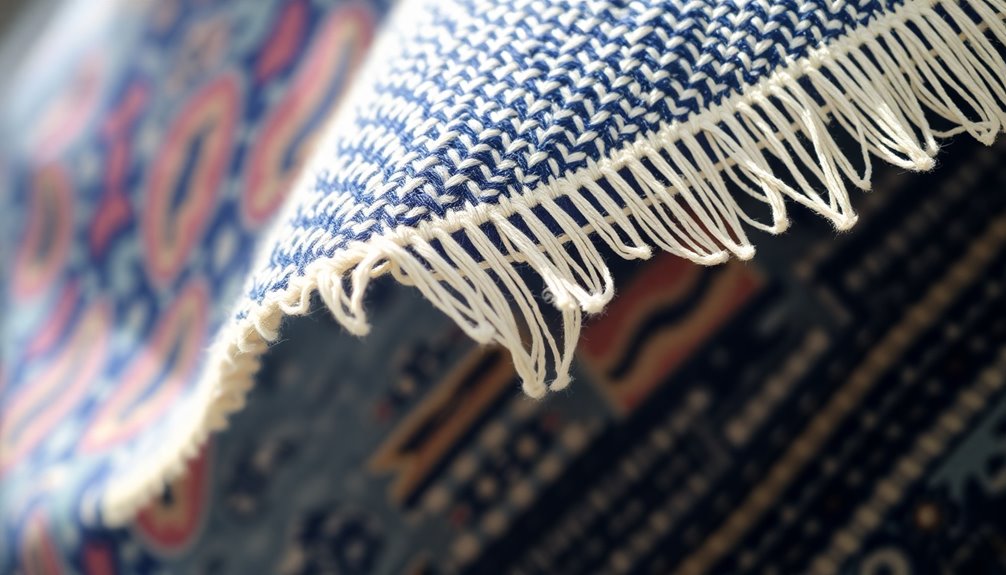
Selvage is the self-finished edge of fabric that runs along its lengthwise grain, playing an important role in preventing fraying and unraveling. The term "selvage" derives from "self-edge," dating back to the 16th century.
In woven fabric, the selvage edges are formed when the weft threads turn back at the edges during weaving, creating a tighter binding than the rest of the fabric. Typically narrower than the fabric, selvage edges usually measure around 1/2 inch and often feature printed information like the manufacturer's name or fabric design.
Recognizing the selvage is vital for understanding the grain of the fabric, helping you determine the right and wrong sides when cutting and sewing, ensuring your projects turn out beautifully.
Types of Selvages
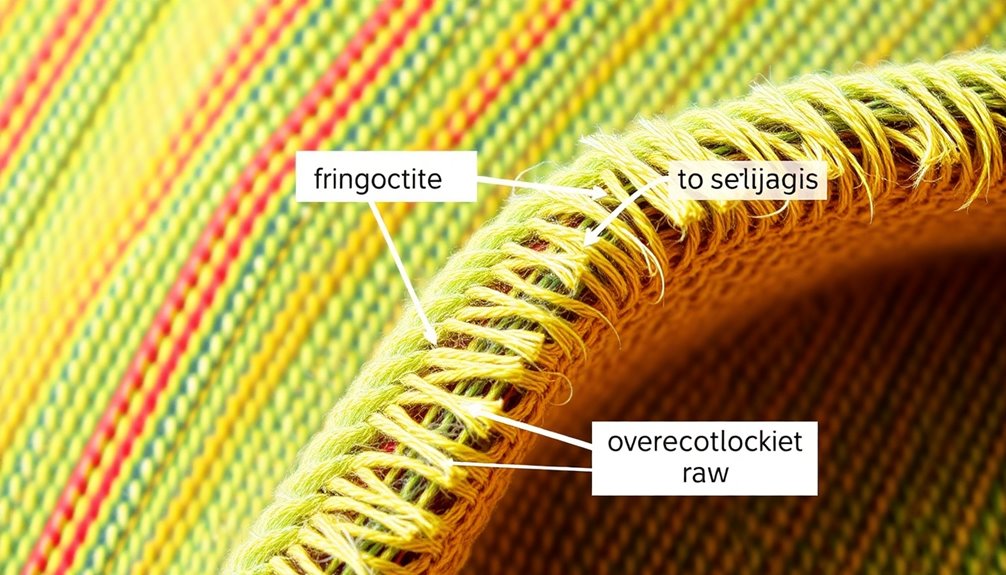
While exploring the different types of selvages, you'll find that each serves a unique purpose in fabric construction.
Plain selvages create a smooth selvage edge that doesn't wrinkle, making them ideal for sewing.
Tape selvages are broader, constructed from ply yarn, and enhance durability.
Split selvages feature narrow edges that are hemmed or chain stitched, preserving their structural integrity.
Fused selvages apply heat to narrow ribbons, fixing the edge and preventing fraying effectively.
On shuttleless looms, leno and tucked selvages require tight weaves to guarantee durability, showcasing the weaving process’s complexity. Moreover, the precision required in creating these specialized selvages highlights the skill involved in modern textile production. Notably, sewing with embroidery thread tips can enhance the overall design, adding both aesthetic value and structural integrity to the finished fabric. As artisans navigate the intricacies of the loom, they blend traditional techniques with innovative practices, resulting in stunning textiles that stand the test of time.
Understanding these types helps you choose the right fabric for your projects, guaranteeing not only aesthetics but also functionality.
Importance of Selvage in Sewing
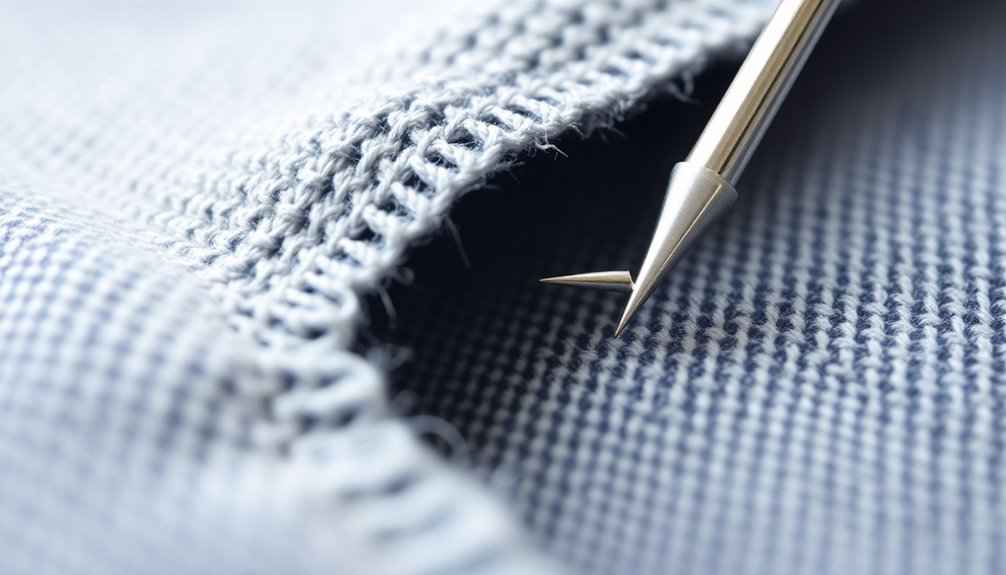
Understanding the various types of selvages naturally leads to recognizing their significance in sewing. The selvage edges of the fabric provide structural integrity, preventing fraying and ensuring quality when you cut fabric.
Knowing the width of selvage, typically around 1/2 inch, helps you utilize it effectively for seam allowances and finishing edges. Additionally, recognizing the selvage aids in identifying the right and wrong sides of the fabric, ensuring proper orientation in your projects.
Creative Uses for Selvage Edges
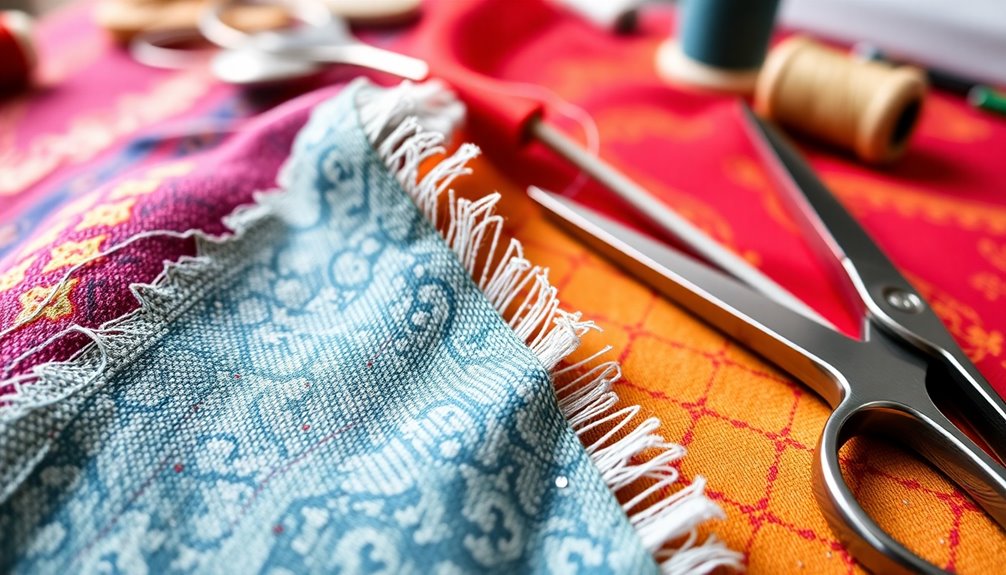
You might be surprised by the creative potential of fabric selvage edges, which can transform your sewing projects into unique masterpieces. These little strips of fabric can be turned into various items, showcasing the design and texture of the fabric. Here's a few ideas:
| Project Type | Description | Creative Twist |
|---|---|---|
| Tote Bags | Use selvage to create unique designs | Combine different weave selvages |
| Coasters | Stitch strips of fabric together | Incorporate little dots for decoration |
| Table Protectors | Make a protective cover | Sew selvage to selvage for added texture |
| Bias Tape | Craft from selvage scraps | Perfect for finishing edges |
| Quilts | Construct using saved selvages | Adds a distinctive look |
Get inspired and let your creativity flow!
Identifying and Retaining Selvage Edges
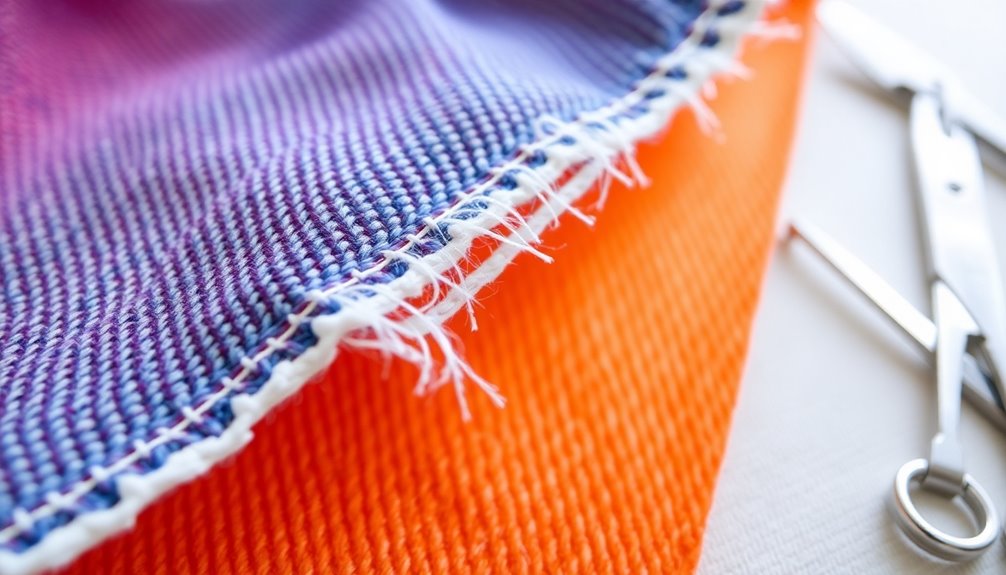
When you immerse yourself in sewing, recognizing and retaining selvage edges can greatly enhance your projects.
To identify selvage, look along the length of the fabric for tightly woven areas that don't fray and often feature printed details like the manufacturer's name. When you see selvage, consider its appearance and width; a complementary selvage can elevate your design.
Use a rotary cutter to carefully cut off the selvage if it contrasts with the fabric or exceeds the seam allowance, typically ¼ to ⅝ inches.
Frequently Asked Questions
What Is Selvedge in Sewing?
When you're working with fabric, you might notice the tightly woven edges called selvedges. These edges run parallel to the warp threads and help prevent fraying.
While they're sturdy, they can be thicker than the rest of the fabric, affecting the look of your finished project.
If you're quilting, you'll want to steer clear of using selvedge edges in your patchwork to avoid lumps and guarantee smooth seams in your quilt.
Which Side of Fabric Is Selvage?
When you're looking at fabric, the selvage is found along the edges that don't fray. It runs parallel to the length of the fabric and has a tightly woven appearance.
You can often spot it by any text or symbols on it. To identify the selvage, simply check the edges opposite the raw cuts.
Recognizing this part of the fabric helps you align patterns correctly and understand the fabric's structure better.
What Does a Selvage Edge Look Like?
A selvage edge stands in stark contrast to the frayed, soft edges you might find on a cut fabric.
You'll notice it's thicker, often featuring a different texture or color, and it's tightly woven to prevent unraveling.
As you explore the selvage, keep an eye out for printed information like the manufacturer's name.
Sometimes, small dots or holes mark where the fabric was held during production, adding a unique character to your material.
How Do You Identify Fabric Selvages?
To identify fabric selvages, look for tightly woven edges that don't fray.
You might notice slight variations in texture or color along the edges, which can help distinguish them from the main fabric.
Keep an eye out for printed text or symbols, usually showing the manufacturer's name or designer.
Also, check for small holes or dots, as these indicate where the fabric was secured during production.
Recognizing selvages can enhance your sewing projects.
Conclusion
In sewing, understanding selvage is like discovering hidden treasure; it can transform your projects. By recognizing the different types of selvages and their importance, you can enhance your work's durability and aesthetics. Plus, getting creative with those edges opens up new possibilities in your designs. So next time you're at the fabric store, pay attention to those selvage edges—they're not just there for looks; they're your allies in crafting something beautiful!
